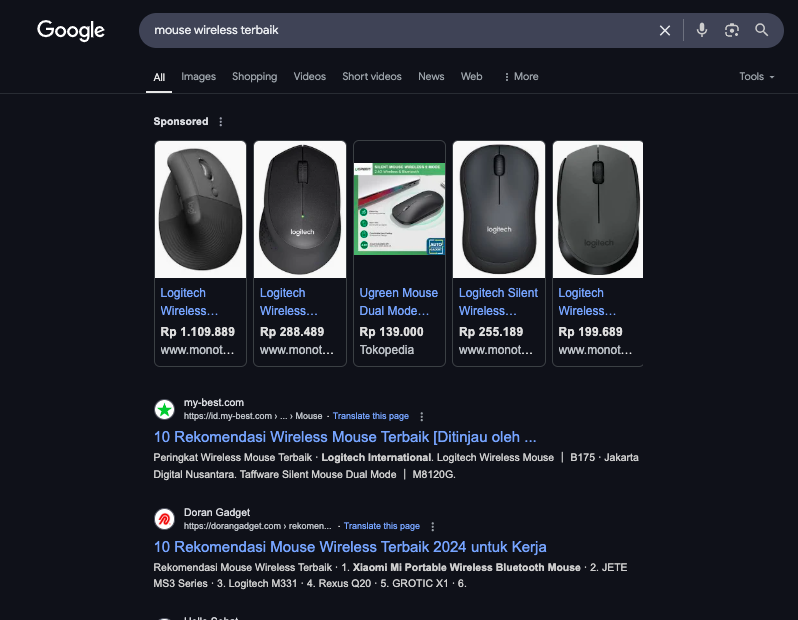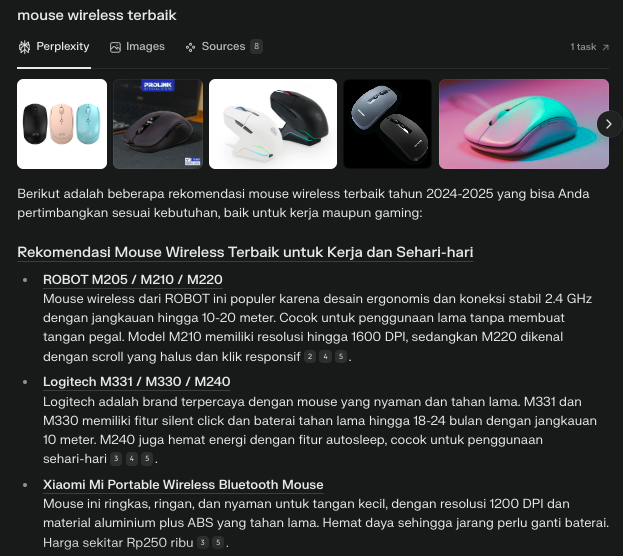It’s only a matter of time before most of us ditch traditional search engines for AI search providing instant answers. The evidence is clear, showing that in 2024 nearly 60% of Google searches end without a click (SparkToro 2024) because AI summaries provide the answers right on the results page. These tools work by quickly pulling together the most relevant information, saving users from digging through links.
This trend is catching on fast—71.5% of Americans now use ChatGPT to find information, and 20% rely on it as their main search tool (HigherVisibility 2024).The trend is also evident in Indonesia, where a 2024 survey found 83.6% of people are familiar with AI, while over 81% use it for information searches (Katadata Insight Center 2024).
This shift towards instant answers fundamentally changes the game for brands. Because AI provides information so quickly, decisions happen in seconds—brands either feature prominently in the summary or risk being overlooked entirely before a user even considers clicking a link. For businesses, this isn’t just a trend; it’s the new reality. Knowing how AI search picks what to show is key to staying visible and trusted.
What Is AI Search and How Does It Differ?
AI search delivers precise answers without extra clicks, providing you with instant, relevant information right on the page. Rather than relying solely on keywords and backlinks, they analyze the intent behind your queries to deliver more precise results. For instance, when you search for “best wireless mouse” (in Bahasa Indonesia):

Google search result of “best wireless mouse”
Traditional Search Engine (Google): When you type a query, Google returns a ranked list of links—often topped by a shopping carousel of sponsored products—based purely on how well each page matches your search terms, how trusted and popular those sites are, and other behind-the-scenes ranking factors. You then click through multiple sites to piece together the information you need.

Perplexity result of “best wireless mouse”
AI Search (Perplexity): It skips the link list and generates a concise, on-screen summary of top pick recommendations—complete with model names, specs, pros and cons, and source citations. Results are tailored to your context, past searches, and even your current location, giving you instantly relevant, personalized insights without digging through dozens of pages.
Together, these examples show how AI search shifts people away from manually browsing link lists to getting instant, personalized answers—turning the search process into a fast, streamlined journey that delivers exactly what you need.
Why AI Search Feels So Much More Personal
AI search personalizes the experience beyond traditional search methods because it can understand intent, synthesize fresh data, and adapt to context in real time through key capabilities:
- Semantic Search Semantic search interprets the meaning behind a query rather than matching exact keywords. A search for “best carry-on luggage” surfaces results focused on dimensions, weight limits, and durability—even if those specifics aren’t in the query.
- Retrieval-Augmented Generation (RAG) Retrieval-Augmented Generation first pulls the most relevant, up-to-date information from trusted sources and then synthesizes it into a single, coherent response. Users receive pros, cons, and specifications all at once—no site-hopping required.
- Real-Time Personalization By factoring in location, device type, and time of day, AI search tailors results on the fly. For example, a query for “coffee shops near me” at 8 PM on a Friday will prioritize 24-hour cafés over ones that have already closed.
These three capabilities work together to learn user preferences over time, making each search increasingly tailored—and reducing the need to return to a page-by-page search approach.
Implications for PR & Communications
Recent research from Hard Numbers found that 61% of AI search results draw on editorial media, while 44% rely on owned channels like blogs and press releases (Hard Numbers 2024). In high AI adoption markets like Indonesia, brands face even more urgency because AI search results that exclude key information or misrepresent their brand narrative can cause them to lose visibility and trust with their audience.
AI search models rely on reputable news outlets and expert commentary. Each earned mention—from news articles and trade publications to press releases and expert blog posts—helps guide these models toward your content. Over time, these credible signals accumulate, making it far more likely that your brand appears accurately in AI search results.
Looking Ahead
AI search is reshaping how brands become visible, making earned and owned media crucial for appearing prominently in AI-generated results. PR and communication teams should structure their content and brand messaging so AI can surface it, and continuously monitor AI search results to ensure their brand remains visible and accurately represented as search evolves.
Written by Syanditya Yanuar Utama, Analyst
